[Big read] Huangqiao makes 30% of the world’s violins: Can it craft a Stradivarius?
In a Jiangsu town rich with musical heritage from its thriving violin-making industry, Lianhe Zaobao journalist Li Kang interviews industry insiders to uncover the history and challenges of this craft.

(Photos: Li Kang/SPH Media)
Walking through the simple glass entrance, one sees a family of three sitting at their respective workbenches, each holding a violin. The father polishes the neck of a violin, while the mother tests some strings and the son assembles a violin scroll. The rhythmic sounds of polishing fill the 20-square-metre studio.
This is a small, unassuming violin workshop along the main road of Huangqiao town, Jiangsu, China. The workshop has been handcrafting violins in this town for over half a century, across three generations.
Lu Shao Bao (57), who manages the workshop, told Lianhe Zaobao that his father Lu Bo Jian was the town’s first violin craftsman, and had been producing violins for more than five decades until his death last year. The younger Lu himself has been crafting violins for nearly four decades, while his son, Lu Xin (31), has been learning the craft for around seven to eight years.
From choosing materials, to planing, lacquering, painting, assembling and tuning, the process of crafting a violin involves more than 180 steps — Lu does it all entirely by hand. His family works more than ten hours a day and has crafted only a few hundred violins to date.
Although their production size is small, the Lu family has quite a number of international customers. Lu said that in the 1990s, there were customers from New Zealand, and they even received orders from Australia’s chamber opera, as well as from performers from the US and South Korea. .
This international success also became a segue to third-generation Lu Xin’s involvement in the family business. In 2016, an American customer purchased a violin and soon after placed an order for 40 more. To help the family complete the order, Lu Xin, who was then working at a multinational tech company in Shanghai, quit his job and came back to his hometown to begin crafting violins.
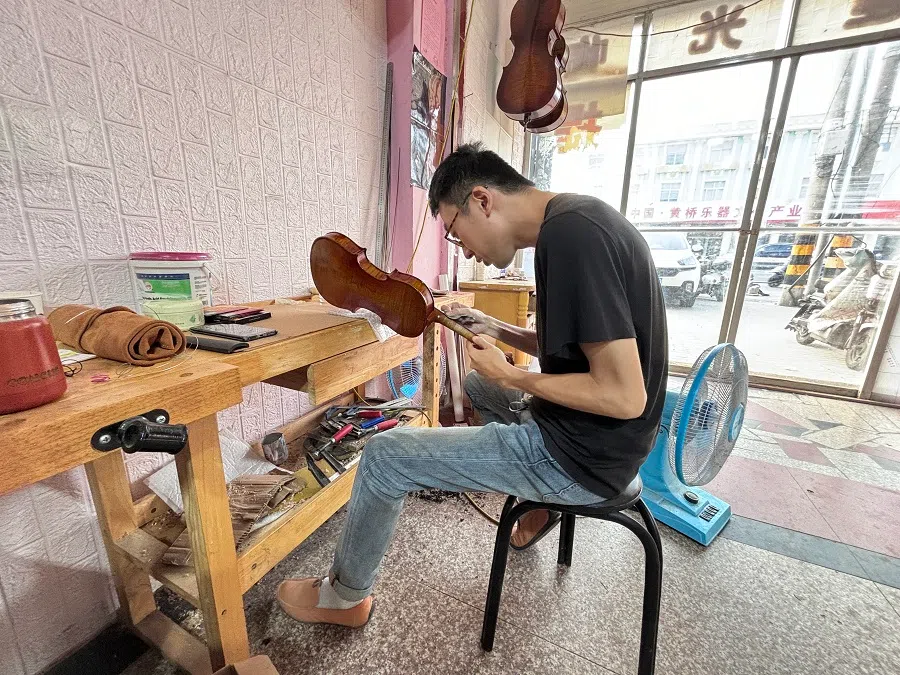
Lu Xin stated that it was a tough decision to resign from a job with a promotion in line, but he eventually came to terms with it. He said, “Coming home to craft violins is also a type of heritage. If I don’t inherit it, this craft will cease to exist.”
This little town of around 200,000 became known as the world’s largest violin production base, with more than 30,000 people working in the violin production industry.
Producing 30% of world’s violins
Huangqiao, situated in central Jiangsu, is a hub for those heading from central and northern Jiangsu towards southern Jiangsu and Shanghai. In ancient times, the town’s development was driven by the fertile fields and convenient water transport. In more recent times, it was known for the Battle of Huangqiao in 1940 between the communists and the nationalists, as well as for its Huangqiao sesame cakes.
This little town of around 200,000 became known as the world’s largest violin production base, with more than 30,000 people working in the violin production industry. There are more than 220 instrument production businesses producing more than 700,000 violins annually — accounting for 70% of total production volume for China and 30% of production volume globally.
Violin crafting in Huangqiao can be traced back to the 1960s. In 1968, when China was in the midst of its Cultural Revolution, several workers from Shanghai’s state-owned violin factory returned home and set up a musical instrument accessories factory in Huangqiao to produce scrolls and bows for the Shanghai factory.
In the 1980s, Huangqiao signed a contract with the Shanghai factory, absorbing their expertise while capitalising on lower prices to gain a foothold in the market. The 1990s market reforms saw numerous private instrument factories emerge from state-owned enterprises, eventually venturing beyond China’s borders.
The Jiangsu FineLegend Musical Instrument Group, the largest violin manufacturer in Huangqiao, also entered the international market during that period. Li Xiaochen, the general manager of FineLegend Group, told Lianhe Zaobao that when FineLegend violins participated in an international musical instrument exhibition in 1998, a standard violin in Europe and America was priced at around US$100, while a FineLegend violin was only sold for 200 RMB (US$28).

With its price advantage, FineLegend violins rapidly increased their market share — today, FineLegend still accounts for 70% to 80% of the global market for low-to-mid-end violins, exporting to more than 80 countries in Europe, America, Asia and other regions.
When asked why they do not target the high-end market, Li admitted that Italian brands tend to be preferred for high-end violins, and that the high-end violin market is limited. He said, “It’s not sustainable for my factory even if there are orders from a few hundred musicians.”
Ageing violin makers
According to FineLegend’s official website, the group currently employs 1,100 people, including 400 technical personnel. During a visit to their violin-making workshops, I found that most of the violin makers were in their 50s and 60s, many of whom have been working for two to three decades. Some jokingly remarked, “We went from being ‘FineLegend ladies’ to ‘FineLegend aunties’ and even ‘FineLegend grannies’!”
The mechanisation of the production process for violins have noticeably improved compared with the past, but more than half of the process still requires manual work.
“... large-scale violin factories will shift to regions with lower labour costs such as India, Vietnam or Cambodia.” — Li Xiaochen, General Manager, FineLegend Group
Li thinks that as the workforce gets older and the younger generation is less willing to work in factories, China’s violin industry may head down the same path that Japan and South Korea did 60 years ago.
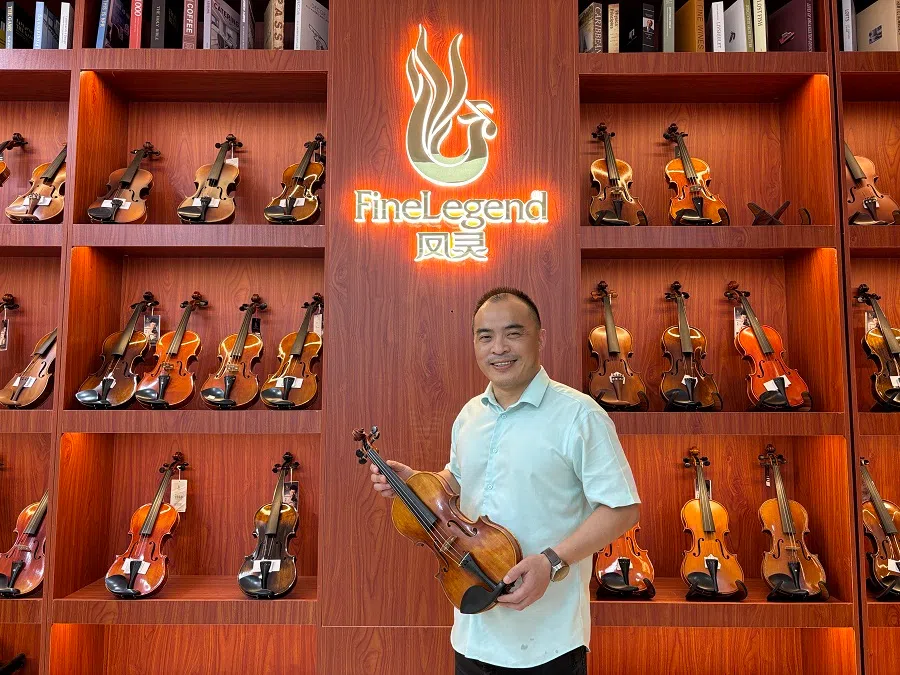
He said, “Large violin manufacturers will gradually disappear and transition into higher-end and more specialised studios, while large-scale violin factories will shift to regions with lower labour costs such as India, Vietnam or Cambodia.”
Younger generations diving in
Although fewer youths are entering factories, a small portion of them are optimistic about the future of the violin-making industry; 23-year-old Peng Xuanyu is one of them.
After graduating from high school, Peng spent three years studying violin moulding in Russia. He has since returned to Huangqiao and is now gaining hands-on experience at his father’s Meiyate (美雅特) violin factory. When I visited the factory, Peng was conducting final checks on a batch of violins scheduled for export to the US the following day.
He said that he compares the data for each violin, making adjustments even for discrepancies as small as a few millimetres, “remembering these figures by heart”.
Peng thinks that a keen focus on detail and quality is key to gaining a foothold in the competitive market in Huangqiao. It is because of this that Meiyate was able to grow from a small workshop of less than 10 square metres in 1999 to a medium-sized factory producing over 100,000 violins annually today.
Peng said that compared with other industries, the musical instrument sector was not as badly hit and tariffs are currently still at 13%. He estimates that tariffs could be increased to 17-18% in the future.
Currently, nearly 90% of the factory’s products are exported, with the US’s Saga Music being its biggest client. Peng told Lianhe Zaobao that since 2006, 60-70% of the factory’s annual orders have come from Saga Music.
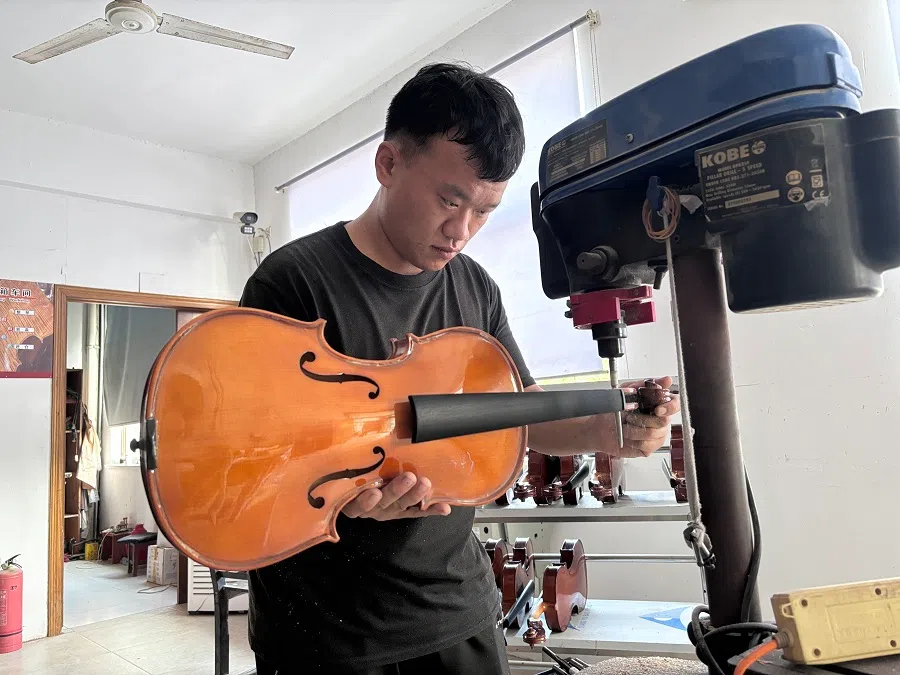
After the China-US trade war broke out, US tariff hikes on Chinese exports had affected the violin industry. However, Peng said that compared with other industries, the musical instrument sector was not as badly hit and tariffs are currently still at 13%. He estimates that tariffs could be increased to 17-18% in the future.
In addition to manufacturing for European and American brands, Meiyate also started developing its own brand a few years ago. Peng said, “After I fully master all these processes, I will start working on high-end ones myself.”
Lacking in individual expression
Senior violin maker Feng Heng, 31, has his own studio in the office building of violin manufacturer FineLegend, separate from the main violin-making workshop.
Feng graduated from the Shanghai Conservatory of Music with a specialisation in violin making. He currently oversees the training of workers on the production line and crafts high-end, fully handmade custom violins. On the day of my visit, he had just completed a handmade violin he spent two and a half months on.
Feng said that the violin is already reserved by a buyer at 50,000 RMB, but “its tone is comparable to foreign violins that cost around 100,000 RMB”.
While the craftsmanship of Huangqiao’s handmade violins have continuously improved in recent years, Italian violins with a longer violin-making tradition are still preferred in the global high-end violin market.
Luo Wei, a violinist and music director at the Singapore Youth Philharmonic Orchestra, told Lianhe Zaobao that the fact that some top performers choose to customise their instruments in Huangqiao indicates that the region’s handmade violin-making techniques have reached a certain level of proficiency, and are able to compete with their Western counterparts in terms of material, carving and tuning.
Luo said that with a centuries-old legacy of violin making, Italian handmade violins place greater emphasis on independent design and individual expression, especially in the fine tuning of tone and the artistry of violin making, which is the complete opposite of Huangqiao.
“The lack of people who can play the violin is another problem that Huangqiao faces.” — Luo Wei, Violinist and Music Director, Singapore Youth Philharmonic Orchestra
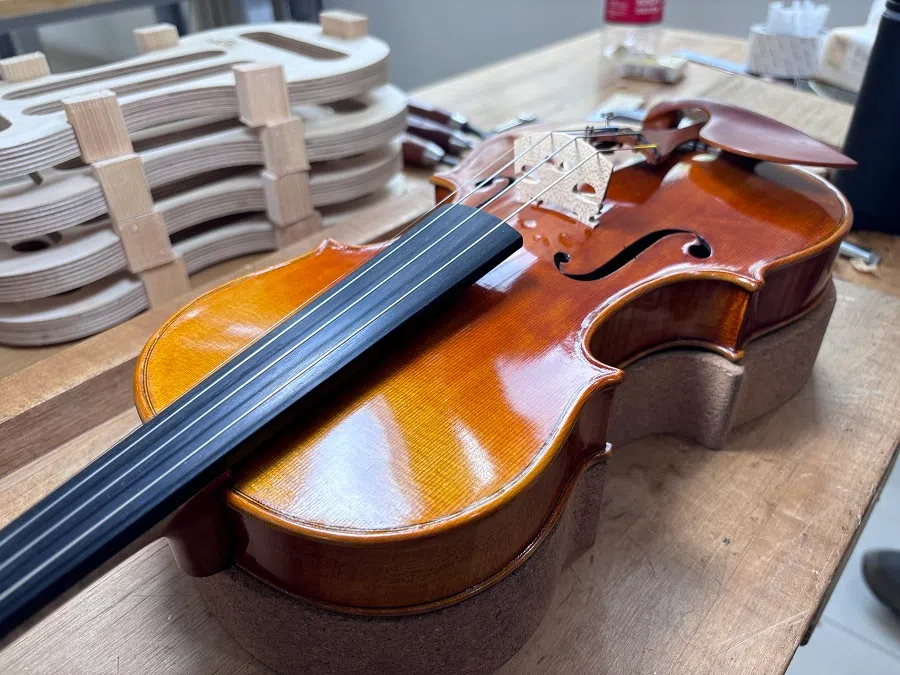
A characteristic of Huangqiao’s violin-making industry is the segmentation of production processes whereby different violin makers focus exclusively on a single step in the process. This ensures precision and consistency in each step while also reducing costs and shortening production cycles, enabling mass production.
Luo pointed out that this model significantly reduces the number of violin makers capable of making a violin themselves. At the same time, they also lack a deep understanding of the overall sound and structure of the violin, making it difficult for them to independently create instruments of a higher quality.
In addition, once a violin is completed, a performer needs to play it to help the violin maker further refine and enhance the instrument. Luo said, “The lack of people who can play the violin is another problem that Huangqiao faces.”
Huangqiao aims to build a city of music
The violin is Huangqiao’s calling card. As soon as you exit the highway, a massive five-metre violin sculpture reminds visitors that they have arrived in China’s “Violin Town”.
Musical elements can be seen everywhere around the town. Billboard advertisements are shaped like violins, park running tracks feature treble clefs, and hotel elevators play piano melodies. A bird’s eye view shows the artificial lake resembling a violin at the centre of the new town.
Near the lake is the “Urban Hall” (城市客厅) built by the local government, with an entire floor dedicated to a museum for violins. It showcases the history of violin making and global violin-making styles, exhibiting over a hundred master-crafted or commemorative violins, including the first batch of violins exported to South America from Huangqiao and the first violin jointly produced with foreign enterprises.
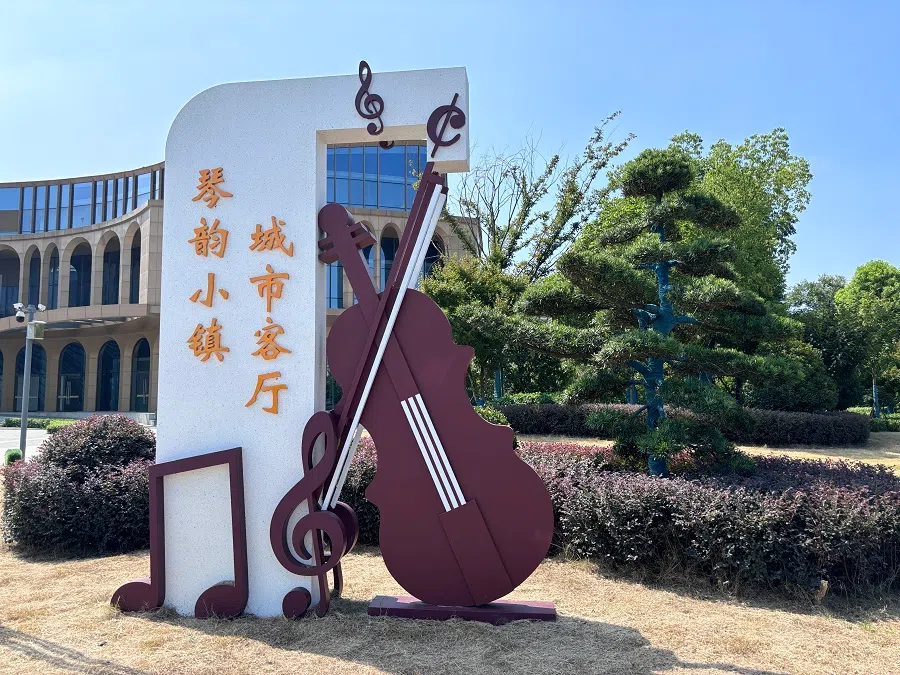
Indeed, urban planning and museums are not enough to instil the beauty of music into people’s hearts in this “Violin Town”. The younger generation needs to love music and learn to play instruments.
Chinese media have reported that almost every primary school student in Huangqiao learns to play a musical instrument. Meanwhile, local authorities frequently organise events such as music competitions for children, concerts featuring well-known players and songs, and an international musical instruments performance day.
However, on my visit to several violin factories, I discovered that almost none of the crafters can play the violin themselves, and few of their children learn to play it.
... learning violin requires long-term investment, “only families with the economic means can afford it.” — Chen Lei, a Huangqiao town resident
Lü Hua, a 38-year-old crafter at FineLegend, told Lianhe Zaobao that her son had attended free violin classes organised by the company for employees’ children, but eventually did not continue.
Chen Lei, a Huangqiao town resident with a child in elementary school, said that local students learn to play a musical instrument through music classes, but there are no requirements as to which instrument. “Learning the recorder also counts,” he said.
Chen added that learning violin requires long-term investment, “only families with the economic means can afford it.”
This article was first published in Lianhe Zaobao as “琴韵小镇奏响世界提琴曲”.


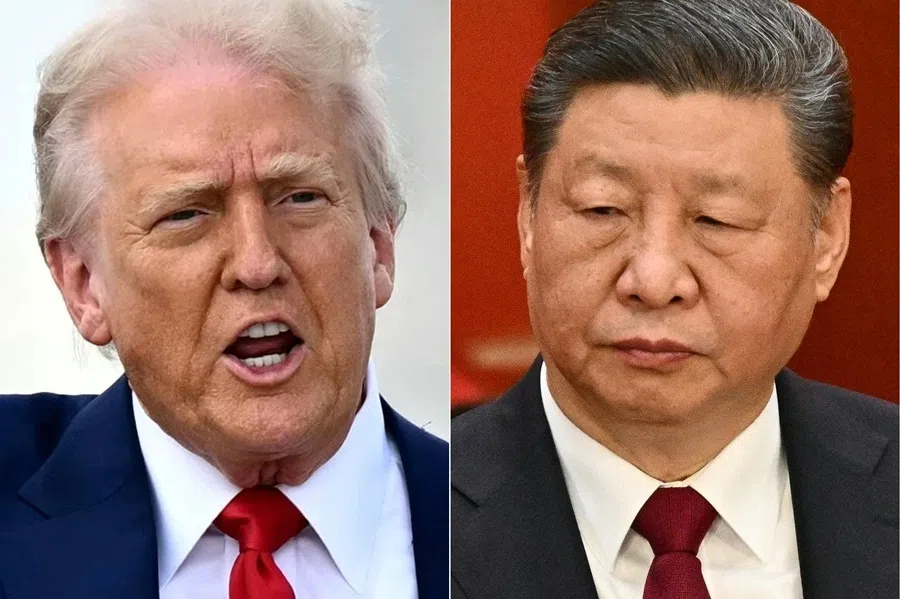

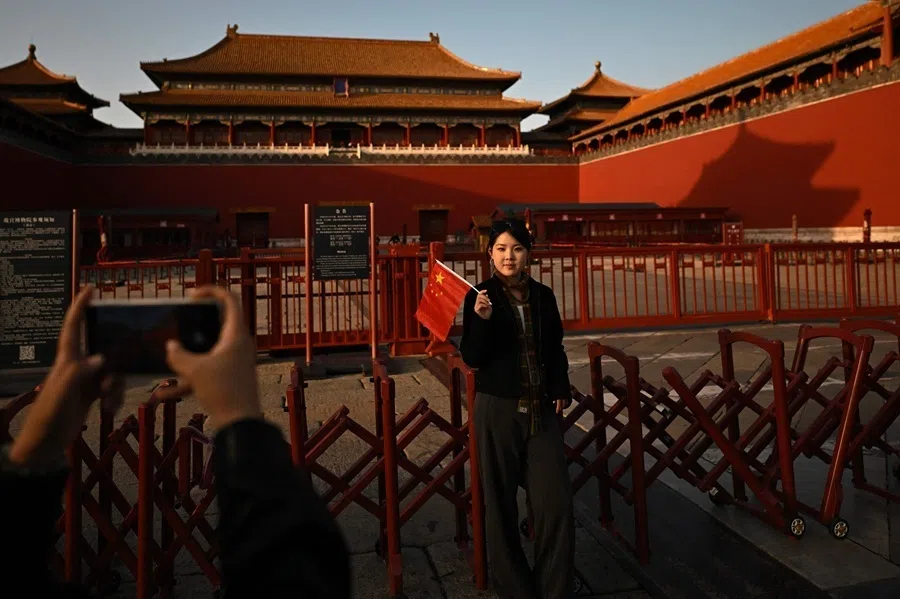
![[Vox pop] Chinese parenting: Tough love or just tough?](https://cassette.sphdigital.com.sg/image/thinkchina/b95bd53631df26290df995775a40e36709bf8dc8e3759460276abd5c426b20b6)